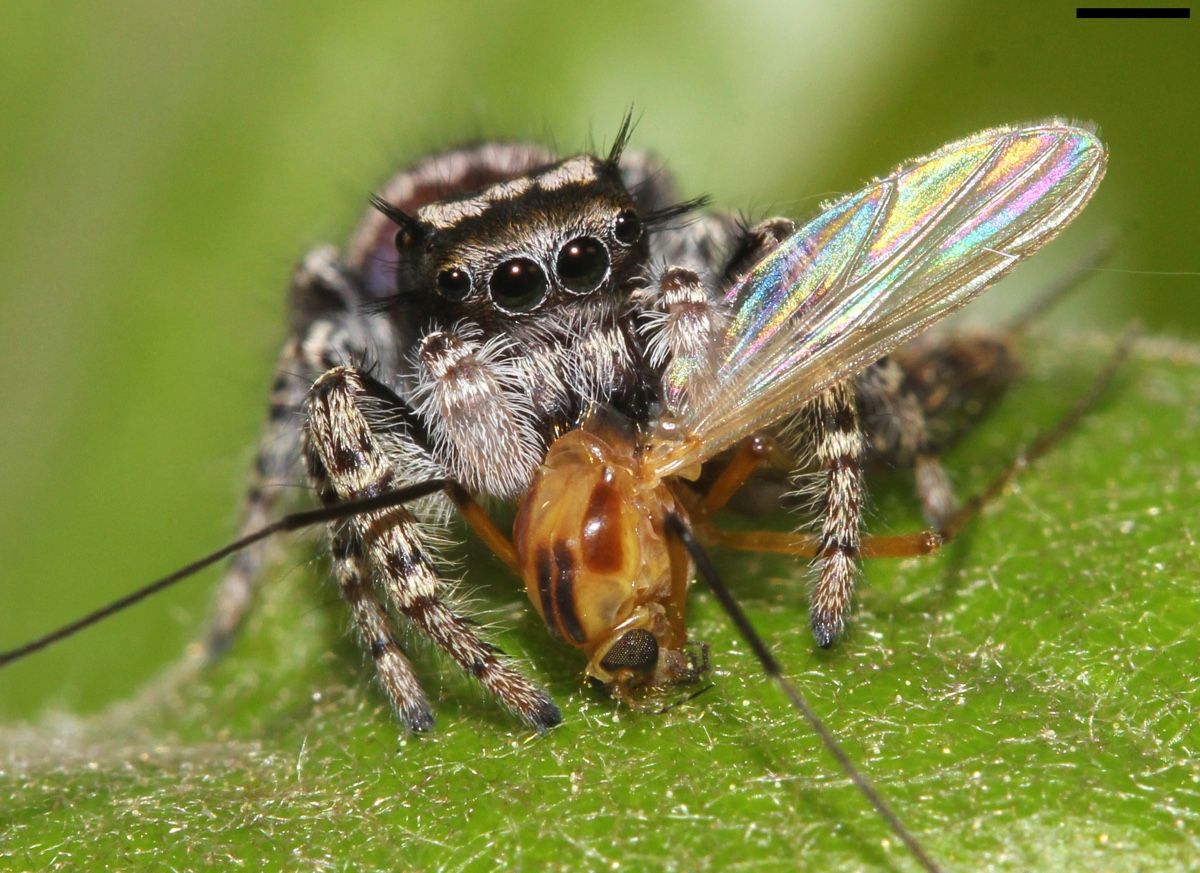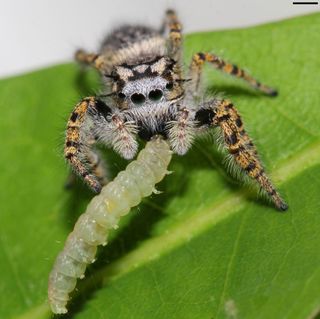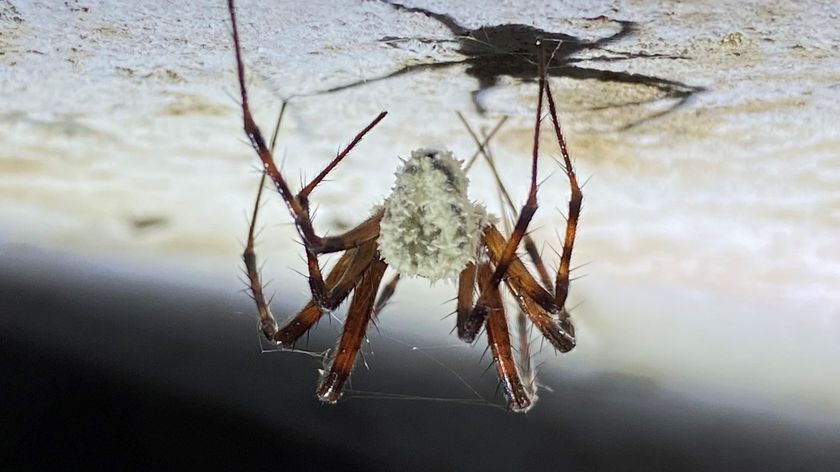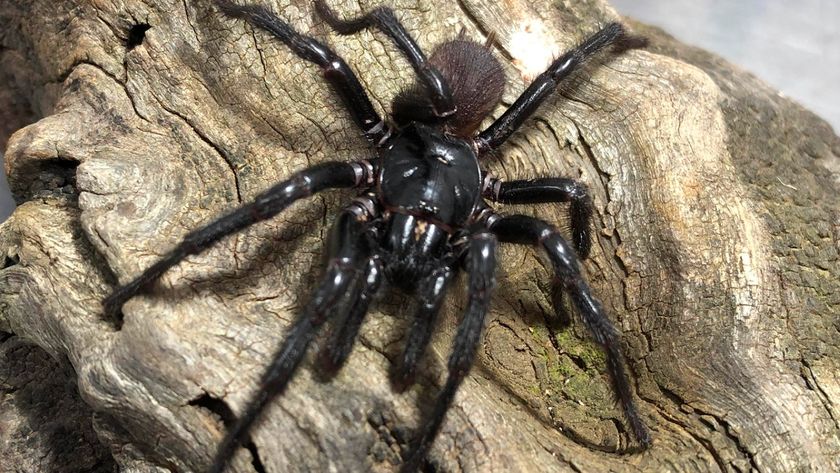Spiders Eat Up to 880 Million Tons of Insects Each Year

Each year, about 27 million tons of spiders consume somewhere between 440 million and 880 million tons of insects, new research finds.
Yeah, that's a lot of bugs.
The new study, published in the journal The Science of Nature, finds that spiders' food consumption rivals — or perhaps dwarfs — the 440 million tons (400 million metric tons) of meat and fish all the humans in world eat each year. Spider prey consumption is similar to the amount of food that all whale species (Cetacea) eat annually, which has been pegged at between 300 million and 550 million tons (280 million and 500 million metric tons), biologist Martin Nyffeler of the University of Basel in Switzerland and ecologist Klaus Birkhofer of the Brandenburg University of Technology in Germany wrote in their paper.
"By contrast, the annual food consumption of all the world's seabirds is estimated at 70 million tons," the researchers wrote. [Creepy, Crawly, Incredible: Photos of Spiders]
Hungry hunters
Spiders are a very successful group of arthropods. They're found everywhere from deserts to grasslands to forests to Arctic tundra. More than 45,000 individual species have been identified so far, Nyffeler and Birkhofer wrote. Scientists estimate that there are around 131 spiders per every square meter of land on the globe, and in some places up to 1,000 individuals in that area (about the size of a single mattress).
With a few rare exceptions, spiders are carnivores, but it's hard to directly measure their impact on their prey because spiders often hunt at night or in nooks and crannies that are difficult to observe, the researchers wrote. To estimate how much spiders eat, then, the researchers had to start by figuring out how much spider tonnage is out there.

To estimate spider biomass (essentially, the weight of all the spiders in the world), the researchers drew from published data on spider biomass from tropical forests, temperate forests, tropical grasslands, temperate grasslands and shrublands, agricultural land, deserts and Arctic tundra. They then used global land cover for each type of environment to estimate the total weight of spiders on the globe, arriving at 25 million metric tons (about 27 million U.S. tons).
Sign up for the Live Science daily newsletter now
Get the world’s most fascinating discoveries delivered straight to your inbox.
Heavy eaters
To figure out how much food it takes to keep 27 million tons of spiders creeping and crawling, the researchers used two methods. In the first, they simply estimated the food needs of a spider per the spider's mass. For most spiders, they pegged this at around 0.1 milligram of food per milligram of spider, or about 10 percent of a spider's body weight, each day. For desert spiders, which live notoriously spartan lives, the researchers used estimates of between 0.01 and 0.04 milligrams of food per milligram of spider.
This method led to a range of between 507 million and 772 million U.S. tons (460 million and 700 million metric tons of prey a year).
The second method involved extrapolating from data taken from the field in which scientists actually counted the number of insects spiders ate. This method led to an estimate of between 435 million and 887 million U.S. tons (395 million and 805 million metric tons).
Insects and springtails (collembolans) make up about 90 percent of spiders' prey, the researchers wrote. A few large species eat worms and small vertebrates, like birds or bats (or even snakes). Forest and grassland spiders are responsible for 95 percent of the prey kill each year, in part because these areas contain the most ground cover and in part because these habitats aren't frequently disturbed. Spiders living in agricultural fields, for example, have to contend with human activities and pesticides. [Goliath Birdeater: Images of a Colossal Spider]
It's impossible to say how many individual insects it takes to get to some 800 million U.S. tons or how many spiders put together weigh 27 million tons, Nyffeler, a senior lecturer in biology, told Live Science. There is too much variation in the estimates, he said. For example, no one knows how many juvenile (and thus smaller) spiders there are per every larger adult. A British arachnologist did estimate in 1947 that there were approximately 2.2 trillion spiders in England and Wales alone, Nyffeler noted.
The only other group of arthropods that can compete with spiders, pound-for-pound, are ants, Nyeffeler and Birkhofer wrote, but ants are not overwhelmingly carnivorous like spiders are.
"These estimates emphasize the important role that spider predation plays in semi-natural and natural habitats, as many economically important pests and disease vectors breed in those forest and grassland biomes," the researchers wrote. "We hope that these estimates and their significant magnitude raise public awareness and increase the level of appreciation for the important global role of spiders in terrestrial food webs."
Original article on Live Science.

Stephanie Pappas is a contributing writer for Live Science, covering topics ranging from geoscience to archaeology to the human brain and behavior. She was previously a senior writer for Live Science but is now a freelancer based in Denver, Colorado, and regularly contributes to Scientific American and The Monitor, the monthly magazine of the American Psychological Association. Stephanie received a bachelor's degree in psychology from the University of South Carolina and a graduate certificate in science communication from the University of California, Santa Cruz.
Most Popular






